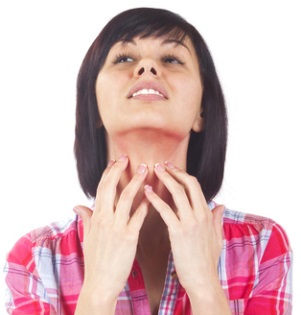
What’s the difference between eczema vs rosacea? We’ll tell you how the two conditions are alike and how they are different. We’ll also show you some pictures of rosacea and eczema so you can see how they differ in appearance. It’s important to know if you have rosacea or eczema, or even some other condition because not all skin conditions are treated in the same way. In fact, in some cases treatments that help one skin condition can make another skin condition worse. Even though eczema and rosacea sometimes look similar, they are very different conditions.
Eczema vs Rosacea
Here are some of the main similarities and differences between eczema and rosacea.
Symptoms – Symptoms of eczema include red or brown patches on the skin, small bumps that leak fluid and sometimes scab over severe itching, and cracked or scaly skin. Symptoms of rosacea include a reddened face, small pus-filled bumps that resemble acne, itching or irritated skin, skin that is tender to the touch, and dry, irritated eyes. Rosacea can also cause thickened skin, especially around the nose, giving it a bulbous appearance.
Where It Appears on the Body – Eczema most often occurs on the arms, hands, legs, and feet, though it can occur elsewhere. Rosacea most often occurs on the face, though it can also occur on the neck, back, and chest.
When It Begins – Eczema usually begins in childhood while rosacea typically doesn’t begin until adulthood, usually over the age of 30. Adults often do have eczema, but most have had the condition since early to middle childhood. Occasionally even infants get eczema (it’s not real common but happens often enough that there is a name for it, infantile eczema) but rosacea is rarely, if ever, seen in babies.
What Makes Symptoms Worse – According to the Mayo Clinic, symptoms of eczema are often made worse by things like rapid changes in temperature, stress, contact with wool clothing or blankets, and the use of harsh soaps or detergents. Symptoms of rosacea are also often made worse by extremes in temperature and by stress, but not by contact with wool clothing or the use of certain soaps or detergents. Instead, symptoms of rosacea can also be made worse by eating spicy foods or dairy products, by the use of certain medications including corticosteroids, and by drinking alcoholic beverages or caffeinated drinks.
Pictures of Rosacea And Eczema
| Eczema Pictures | Rosacea Pictures |
 |  |
 |  |
 |  |
You can compare eczema vs rosacea in these pictures. Notice the differences as well as the similarities. While both causes reddened skin and may cause acne-like bumps, rosacea isn’t patchy or scaly the way eczema is and eczema doesn’t cause thickened skin, especially around the nose, the way rosacea can. Of course, you might have eczema or rosacea and not look exactly like the people pictured here. Your skin tone, where on your body the condition appears, and other factors can affect the way the conditions look on your body. Keep in mind the fact that some other skin conditions may look similar to these, as well. Talk to your doctor or see a dermatologist, a doctor that specializes in skin disorders, if you have questions about your diagnosis.
Treatment For Eczema vs Rosacea
It’s important to determine whether you have rosacea or eczema because the conditions are not treated the same way. For instance, doctors often prescribe corticosteroids to treat eczema, either in a topical ointment to apply to the affected area or, in severe cases, to be taken orally or by injection. However, corticosteroids don’t help with rosacea and in fact, often make the condition worse.
To learn more about treatment options for rosacea, follow this link to our rosacea skin treatment information page.
To learn more about treatment options for eczema, follow this link to our eczema treatment page.
Mayo Clinic: Eczema
